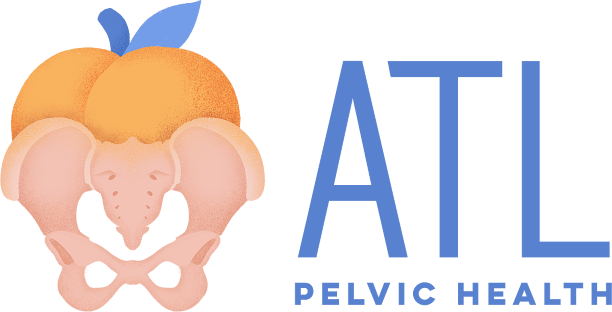Cesarean Recovery Tips: Supporting Your Pelvic Floor
Pelvic Floor Therapy After a C-Section: Why It Matters More Than You Think
Cesarean births account for nearly one in three deliveries in the U.S., yet the recovery process is often overlooked—especially when it comes to pelvic floor health. Many people assume pelvic floor therapy is only necessary after vaginal delivery, but the truth is: C-section recovery comes with its own unique set of challenges.
Whether your cesarean was planned or unexpected, pelvic floor therapy can play a vital role in helping you heal, feel strong again, and reconnect with your body. Imagine having an ACL surgery and not getting any post surgical rehab. Yet, you have had major abdominal surgery and don’t receive the same level of care. At ATL Pelvic Health, we believe motherhood is a sport, and we want to provide you with the best possible care in your postpartum journey so that you can thrive throughout every stage of motherhood without fear of peeing your pants, low back pain, or pain from your incision.
Common C-Section Recovery Challenges
Even though a baby didn’t pass through the birth canal, the core and pelvic floor still go through tremendous changes during pregnancy and surgery. After a C-section, some of the most common concerns we see at ATL Pelvic Health include:
Scar tissue adhesions: After a C-section, scar tissue forms around the incision site. Without proper mobility, this tissue can bind to underlying layers, contributing to pain, pulling sensations, or restriction in movement.
Core weakness and abdominal separation: The incision goes through several layers of tissue, including your abdominal wall. Many new moms experience difficulty reconnecting to their core, noticing a lingering belly pooch or poor coordination between the abs and pelvic floor.
Pelvic pain or pressure: Yes, pelvic pain can still happen even if you didn’t have a vaginal birth. Pregnancy itself impacts the pelvic floor, and compensatory patterns after surgery can lead to hip, back, or pelvic discomfort.
Bladder or bowel changes: Straining to go to the bathroom, constipation, or urinary urgency can occur after a C-section due to muscle tension, nerve involvement, or fear of bearing down.
How Pelvic Floor Therapy Helps
At ATL Pelvic Health, we take a holistic, individualized approach to C-section recovery. Here’s how pelvic floor therapy can support you:
1. Scar Tissue Mobilization
We use gentle, hands-on techniques to improve scar tissue mobility, reduce adhesions, and restore movement through the abdominal wall. This helps reduce pain, improve posture, and restore full core function.
2. Core Reconnection
We guide you through safe, progressive core activation exercises that rebuild strength and coordination. We focus on deep core muscles like the transverse abdominis and diaphragm, not just surface-level strength.
3. Pelvic Floor Coordination
We assess how well your pelvic floor and core are working together—and help retrain both to improve support, reduce symptoms like leaking or pressure, and prevent long-term issues.
4. Pain Management & Postural Support
C-section recovery often leads to postural shifts, tightness in the hips or low back, and compensation. We provide hands-on release work, movement education, and body mechanics strategies to help you move with less pain and more ease.
5. Empowerment & Education
Most importantly, we create space for you to ask questions, learn about your healing body, and feel supported every step of the way.
You Deserve a Full Recovery
Your C-section was a major surgery. You deserve more than a six-week checkup and a “you’re cleared.” Pelvic floor therapy can help you feel like you again—strong, confident, and connected to your body.
Ready to support your healing? Schedule your C-section recovery evaluation today.





